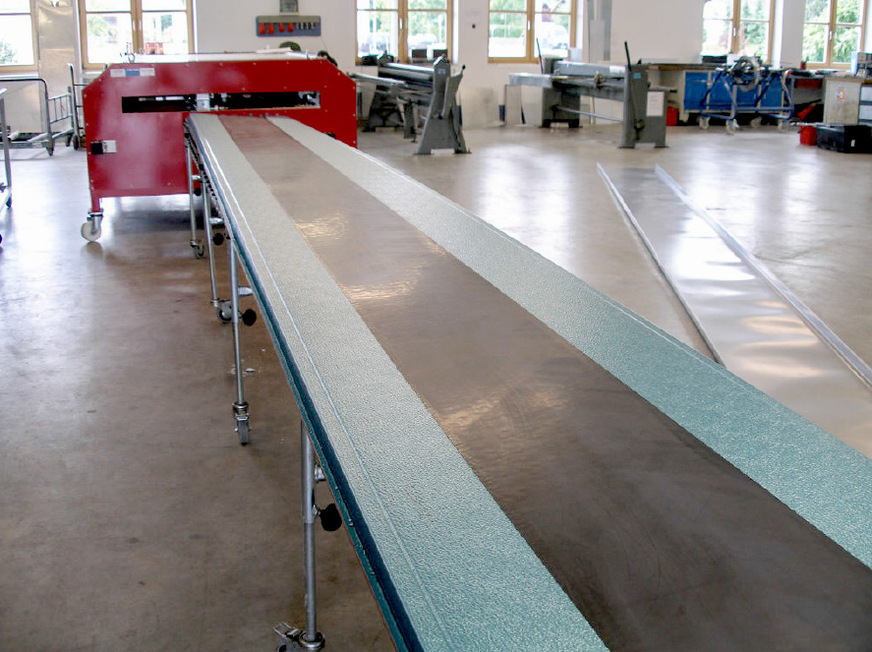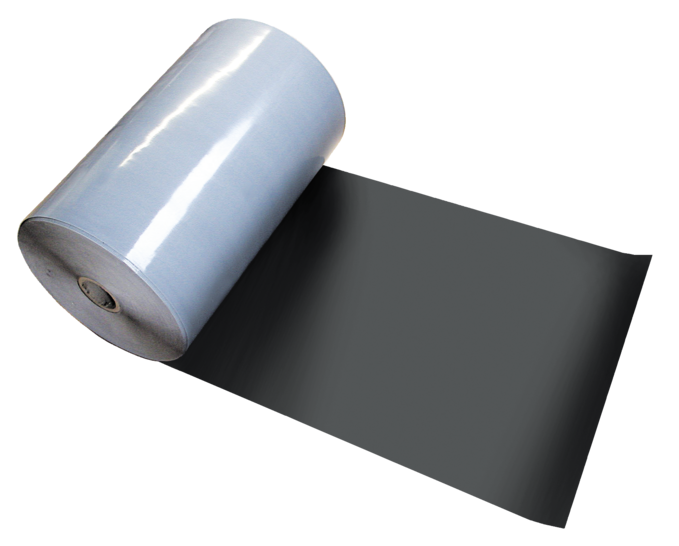Can you hear anything? A loudness analysis proves absolute silence. Akos, the silver bullet against pattering noises formerly distributed by Mifaro and M.A.S.C., is now available from M.A.S.C. under the name "Acoustic separation layer ATL/Akos“. The product scores with perfect values - first and foremost with excellent sound absorption of up to 8 dB. The separating layer is around 0.5 mm thick and weighs an impressive 0.8 kg/m². Standard widths of 150 and 300 mm are in stock - other dimensions are available on request. In roll lengths of 100 linear meters, the self-adhesive separation layer can be laminated onto standing seam roof panels by hand or by machine. For example, this could be done with the Schlebach FBM foiling machine. Applied over the entire surface of metal profiles or panels, the separation layer minimizes structure-borne noise and thus makes a significant contribution to noise abatement.
Legally regulated in Germany
Depending on the installation situation, metal components are defined as building parts affected by noise. For example, pipe clamps can transmit the sound of water in rainwater downpipes to the inside of the building. This is similarly the case with other metal components. For instance, if there are voids under metal profiles, ledges or panels, raindrops can cause massive pattering noises. In this regard, planners and building owners are becoming increasingly sensitive, and noise abatement measures and the associated protection against environmental noise are becoming more important for sheet metal roofers. The exact regulation has been in place since 2005 through the implementation of the EC Directive on the Assessment and Management of Environmental Noise and the Ordinance on Noise Mapping. However, in addition to the statutory regulations on noise control, there are also technical guidelines.
Noise protection methods
There is a technical distinction between active and passive noise abatement. While active noise abatement covers measures at the source of the noise (e.g., insulation of industrial plants, flight bans, construction of noise barriers), passive noise abatement describes measures at the point of immission. This can be, for example, the use of noise protection glazing for windows or the use of ATL/Akos for metal roofs, facades and ledges. It is important to note that ATL/Akos does not provide classic sound insulation, but rather sound attenuation - i.e., it impedes the propagation of sound by absorbing airborne sound. In the case of sound absorption, the sound energy is converted into inaudible vibrational energy waves and, as a result, the reflection at a boundary surface is reduced.
Ideal for metal roofs
The ATL/AKOS self-adhesive acoustic separation layer consists of high-quality, mineral-filled polyolefin and is coated on one side with aging-resistant acrylate adhesive. Applied separation layers have been proven to pull down light metal sheets, reduce the formation of voids and thus the transmission of structure-borne sound. The sound reduction of loudness according to the expert Prof. Zwicker is up to 8 dB according to DIN 45631. In addition to classic metals such as copper and zinc, lightweight aluminum roofs or very thin stainless steel roofing benefit particularly. Moreover, appropriate installation counteracts the prejudice that "a metal roof is noisy". Overall, the acoustic separation layer guarantees excellent sound insulation properties and, associated with this, more quality of life for the people living under the roof.
(first published in BAUMETALL issue 07-2014)
Contact us

M.A.S.C.

